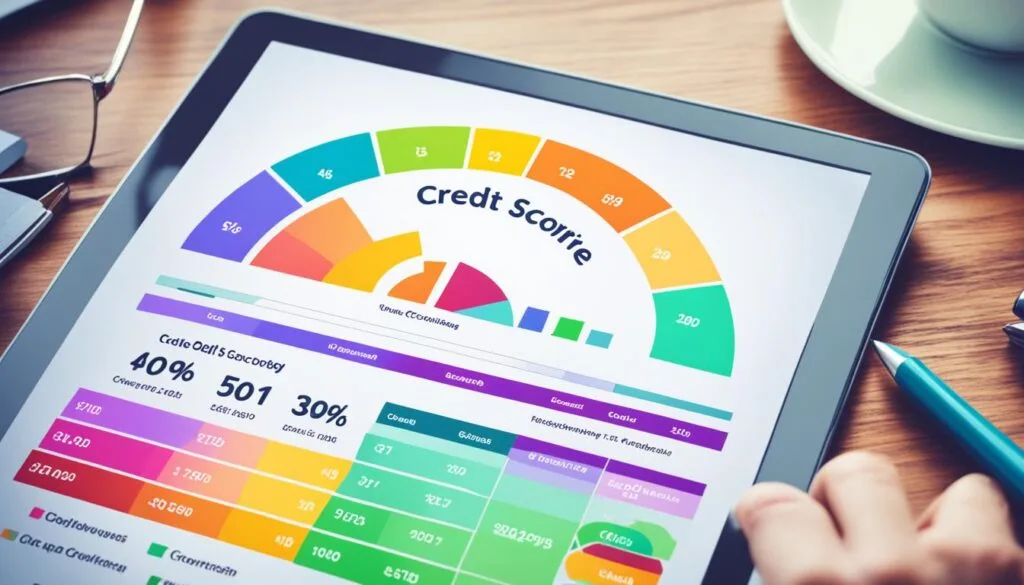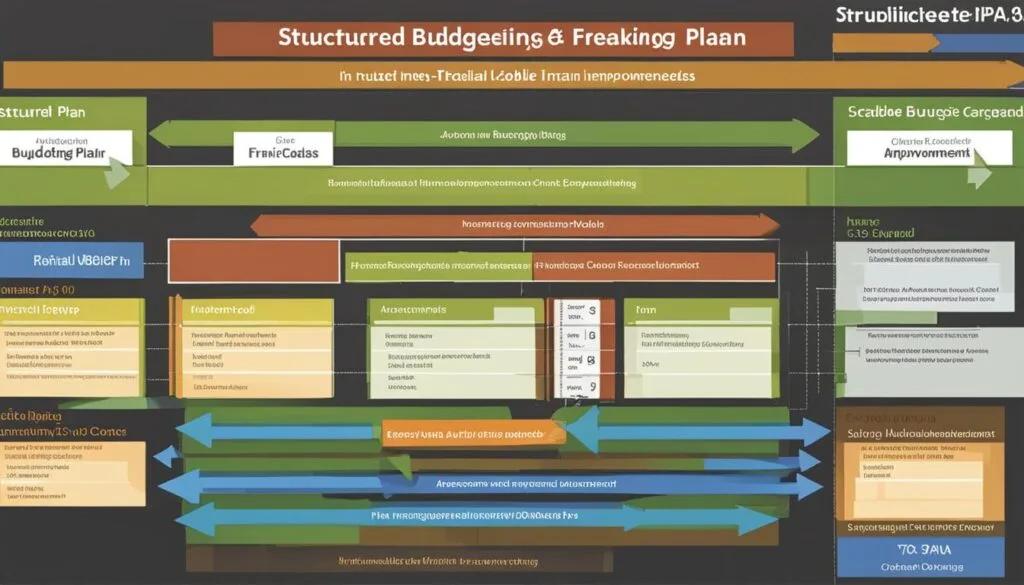

Trading can be like riding a roller coaster of feelings, even for experienced investors. To do well in the changing world of financial markets, you need more than just knowledge – you need to control your mind. At Straight Fire Money, we know the mental challenges traders face every day. We’ve put together this list of 12 useful techniques to help you manage your trading psychology, improve your financial success, and handle the ups and downs of the market with confidence.
| Key Takeaways |
|---|
| 1. Understanding your emotions helps make better trading decisions 2. A good trading plan helps you navigate market changes 3. Having a growth mindset helps you keep improving your trading skills 4. Managing risks is important for long-term trading success 5. Practicing with fake trading tools builds confidence without real money risk 6. Keeping a detailed trading journal helps you learn and improve |
1. Develop Emotional Intelligence
Emotional intelligence is very important for successful trading. It’s about understanding how your feelings affect your decisions when you’re under pressure. Knowing how emotions impact your choices can help you stay calm and make smart decisions when the market gets crazy.
To improve your emotional intelligence in trading, try these things:
- Practice being aware of your thoughts and feelings while trading
- Regularly check how you’re feeling to spot what triggers emotional reactions
- Create a routine to help you feel centered before you start trading
- Learn to tell the difference between gut feelings based on experience and emotional impulses
- Ask for feedback from mentors or friends about how you react to trading results
2. Create a Solid Trading Plan

A good trading plan is like a map for your financial journey. It helps you navigate the complex market with a clear purpose. A strong plan keeps you on track and stops you from making rushed decisions based on fear or excitement. Your trading plan should change as you gain experience and the market changes.
Important things to include in your trading plan:
- Clear rules for when to enter and exit trades based on specific market signs
- Rules for managing risk, including how much to invest and how much you’re willing to lose
- Clear goals for different time periods (daily, weekly, monthly, yearly)
- A list of what you prefer to trade and why
- Guidelines for changing your strategy in different market conditions
- A schedule for reviewing and adjusting your plan based on how well it’s working
Breaking free from overthinking is important when making your plan. Remember, a good plan you use today is better than a perfect plan you never start. Begin with a basic outline and improve it as you gain experience and learn more about the market.
3. Embrace a Growth Mindset

Having a growth mindset can change how you trade. This way of thinking helps you see every market experience, whether you make money or not, as a chance to learn and get better. In the always-changing financial markets, being able to adapt, learn, and grow is essential for long-term success.
Ways to develop and strengthen a growth mindset in trading:
- Think of losses as lessons that teach you about trading
- Set learning goals along with money goals for each trading period
- Question what you think you know about how the market works
- Ask for honest feedback from more experienced traders
- Be curious about new trading strategies and ways to analyze the market
- Make a plan for personal growth that fits with your trading goals
Building a wealth mindset goes well with a growth mindset in trading. It encourages you to think beyond quick profits and focus on creating lasting wealth through constant improvement and smart decision-making.
4. Master Risk Management

Managing risk well is like having a strong immune system for your trading. It’s not about avoiding all risks – that’s impossible in trading. It’s about smartly managing potential losses while maximizing opportunities for growth. Good risk management lets you stay in the game long enough to benefit from big market moves.
Advanced risk management strategies to think about:
- Use different levels of risk, adjusting how much you invest based on how confident you are
- Use options to protect against possible market changes
- Make and stick to a plan for handling big losses
- Regularly test how your investments would do in different market situations
- Think about how different investments relate to each other to spread out risk
- Use trailing stops to protect profits while allowing for extended market moves
Building financial stability in a global economy requires understanding big risks and how they might affect your trading strategy. This broader view can help make your risk management approach stronger and more adaptable to changing economic conditions.
5. Practice with Simulation Tools

Using simulation tools is a great way to get better at trading. These tools let you test strategies and build confidence without risking real money. It’s like a flight simulator for traders, allowing you to experience different market conditions safely.
Advanced ways to get the most out of trading simulators:
- Recreate past market events to practice how you’d respond to extreme situations
- Use simulators to test and improve your trading strategies over different time periods
- Practice using your entire trading plan, including risk management rules
- Try different types of orders to understand how they affect your trades
- Record and analyze your practice trades to spot patterns in how you make decisions
- Slowly increase the difficulty of your simulated trades as you get better
While credit score simulation tools are different, they show how digital simulations can provide valuable insights and improve financial decision-making skills in various areas.
6. Keep a Detailed Trading Journal


A detailed trading journal is more than just a record of trades. It’s a powerful tool for reflecting on your decisions, spotting patterns, and continuously improving. By carefully documenting your trading journey, you create a personal database of experiences and insights that can help you make better decisions in the future.
Important things to include in your trading journal:
- Detailed market analysis that led to each trade decision
- Screenshots of charts with entry and exit points clearly marked
- How you felt before, during, and after important trades
- Outside factors that might have influenced your trading decisions
- Performance measurements like win rate, average win/loss, and risk-reward ratios
- Regular reviews to identify trends in your trading behavior
- Notes on lessons learned and areas for improvement
While not specifically for trading, debt payoff apps show how consistently tracking and analyzing financial decisions can lead to better outcomes and behavior changes. Apply similar ideas of regular recording and review to your trading journal for the best results.
7. Develop Stress Management Techniques
Trading can be very stressful, which can lead to poor decisions and burnout if not managed well. Developing good stress management techniques is crucial for keeping a clear mind and emotional balance when the market is volatile.
Advanced stress management strategies for traders:
- Practice mindfulness meditation to improve focus and reduce reactions to market changes
- Exercise regularly to boost mood and reduce stress hormones
- Use biofeedback techniques to recognize and control physical stress responses
- Create a pre-market routine that includes relaxation exercises and positive self-talk
- Set up a dedicated trading space that minimizes distractions and stress
- Practice visualizing different trading scenarios to mentally prepare
- Set clear boundaries between work and personal life to prevent trading stress from affecting other areas
Understanding financial education and retirement saving basics can give you a bigger picture view of your financial journey, helping to reduce stress by putting short-term trading results into the context of long-term financial goals.
8. Stay Informed with Diverse Sources

In today’s world, staying well-informed is both necessary and challenging for traders. The key is not just gathering information, but choosing a variety of good sources that give you a complete understanding of the market. This approach helps you develop a better understanding of market dynamics and avoid getting stuck in echo chambers or biased viewpoints.
Ways to develop a strong information system:
- Create a personalized news feed with trusted financial publications, market analysis sites, and industry-specific sources
- Follow a mix of market analysts and traders on social media, including both positive and negative views
- Attend online seminars and conferences to learn from industry experts
- Use advanced data tools to better understand complex market information
- Join discussion groups or trading forums to exchange ideas and challenge your assumptions
- Read academic research and economic reports to deepen your understanding of market forces
Learning about impact investing is a good example of how broadening your financial knowledge can give you new perspectives on market trends and potential investment opportunities, improving your overall trading strategy.
9. Set Realistic Goals and Expectations

Setting realistic goals and managing expectations is crucial for long-term success and mental well-being in trading. Unrealistic expectations can lead to unnecessary stress, overtrading, and poor risk management. By aligning your goals with your skills, resources, and market realities, you create a sustainable plan for growth and success.
Advanced goal-setting strategies for traders:
- Use a tiered goal system with short-term, medium-term, and long-term objectives
- Use the SMART (Specific, Measurable, Achievable, Relevant, Time-bound) criteria to refine your trading goals
- Regularly reassess and adjust your goals based on market conditions and personal progress
- Set process-oriented goals (e.g., sticking to your trading plan) alongside outcome-oriented goals (e.g., profit targets)
- Develop a personal benchmarking system to measure your performance against relevant market indexes
- Create a reward system for achieving milestones to reinforce positive trading behaviors
Achieving financial independence is a good example of a long-term goal that can provide direction and motivation for your trading journey, helping you maintain perspective during short-term market fluctuations.
10. Apply the Debt Snowball Method to Trading

The Debt Snowball Method, usually used for paying off debt, can be adapted to trading to build momentum, confidence, and discipline. This approach focuses on getting small wins to create psychological momentum, which can be very helpful in developing trading skills and managing risk.
Creative ways to use the Debt Snowball idea in trading:
- Start with a series of small, likely-to-succeed trades to build a record of success
- Slowly increase the size of trades or complexity of strategies as you get consistent results
- Focus on mastering one trading strategy or market before moving to others
- Set small account growth targets, celebrating each milestone achieved
- Use profits from successful trades to “pay off” past losses, mentally clearing the slate
- Apply strict risk management to ensure early successes aren’t wiped out by big losses
Learn more about Dave Ramsey’s Debt Snowball Method and think about how its ideas of focused effort and psychological reinforcement can be used to improve your trading approach and mindset.
11. Seek Professional Support and Mentorship

Getting better at trading often happens faster and more effectively with professional support and mentorship. Talking to experienced traders and financial experts can give you valuable insights, help you avoid common mistakes, and offer personalized guidance for your trading style and goals.
Comprehensive ways to use professional support in trading:
- Talk to a trading psychologist to address specific emotional or behavioral challenges in your trading
- Join a structured mentorship program that includes regular one-on-one sessions with an experienced trader
- Participate in advanced trading workshops that offer hands-on practice with professional feedback
- Consider a short-term apprenticeship or internship with a trading firm to gain real-world experience
- Form or join a group of traders at a similar level to share experiences and strategies
- Use professional trade review services to get expert analysis of your trading decisions
While focused on credit, expert credit counseling services show the value of specialized financial guidance. Apply this idea to your trading journey by seeking out experts who can provide targeted advice and support in areas where you need to improve.
12. Develop a Personal Self-Care Routine

A good self-care routine is essential for performing well in trading. Analyzing markets, making decisions under pressure, and managing financial risks can be tough on your mind and body. A well-designed self-care plan ensures you’re at your best when you sit down to trade.
Advanced elements of a trader’s self-care routine:
- Stick to a consistent sleep schedule to ensure you’re thinking clearly during market hours
- Plan your meals to support mental clarity and sustained energy throughout the trading day
- Practice regular mindfulness or meditation to improve focus and control emotions
- Do physical activities that include both cardio and strength training for overall health
- Schedule regular breaks from screens to prevent information overload and maintain perspective
- Have hobbies unrelated to finance to provide mental balance and prevent burnout
- Build supportive relationships outside of trading for emotional well-being
Focusing on overall financial health, including things like credit repair, helps create a more balanced trading mindset by reducing outside financial stresses and promoting a complete approach to managing wealth.
Conclusion
Getting better at trading psychology is an ongoing process that requires dedication, self-reflection, and continuous improvement. By using these 12 comprehensive techniques, you can greatly improve your emotional control, decision-making processes, and overall trading performance. Remember that success in trading isn’t just about knowing the market or having technical skills—it’s about developing a resilient mindset that can handle the complexities of financial markets.
At Straight Fire Money, we’re here to support your growth as a trader. We encourage you to slowly add these strategies to your trading routine, giving yourself time to make each technique a natural part of your approach. Keep learning, stay disciplined, and be patient with your progress. As you continue to improve your trading psychology, you’ll likely find that your confidence grows, your decisions become more consistent, and your overall trading results get better.
Remember, the most successful traders are those who understand not just the markets, but also themselves. By mastering your trading psychology, you’re setting the foundation for long-term success and financial growth. Keep pushing forward, stay adaptable, and trust in the process of continuous improvement. Your journey to becoming a more skilled and psychologically prepared trader starts now!


The information here is incredibly practical and actionable. I’m already brainstorming ways to incorporate these ideas into my daily routine. Thank you for providing such concrete value.
Hi there to all, for the reason that I am genuinely keen of reading this website’s post to be updated on a regular basis. It carries pleasant stuff.
Very well presented. Every quote was awesome and thanks for sharing the content. Keep sharing and keep motivating others.
Just wanted to say thanks for this awesome post.
Very well presented. Every quote was awesome and thanks for sharing the content. Keep sharing and keep motivating others.
I like the efforts you have put in this, regards for all the great content.
Pretty! This has been a really wonderful post. Many thanks for providing these details.
Awesome! Its genuinely remarkable post, I have got much clear idea regarding from this post